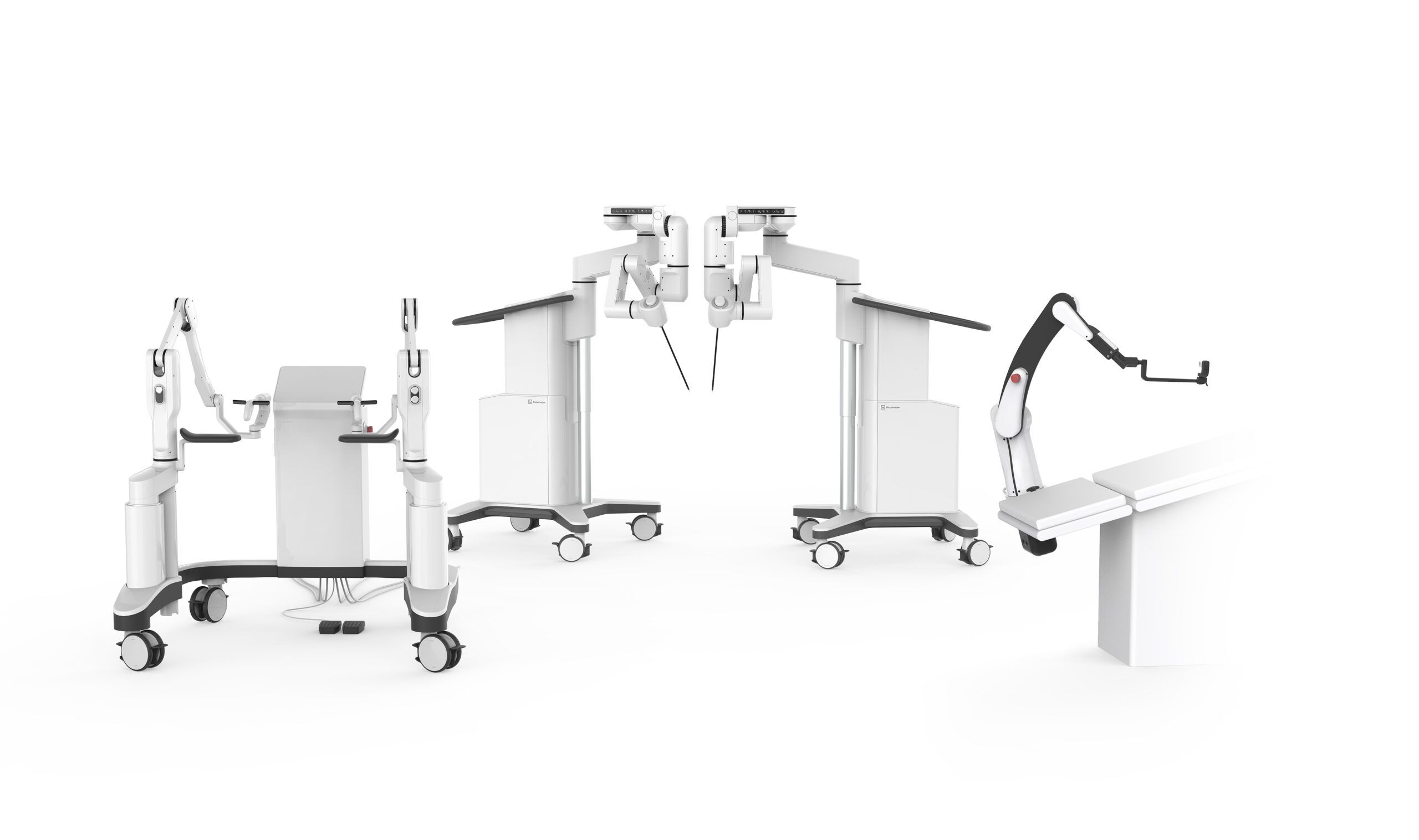Distalmotion unveils Dexter at 136th Congress of German Surgeons
March 27, 2019
A new surgical robot poised to trigger the widespread adoption of robotic surgery for minimally invasive surgery

A new surgical robot poised to trigger the widespread adoption of robotic surgery for minimally invasive surgery
MARCH 27, 2019PRESS RELEASE
– Dexter removes the complexity hampering the widespread adoption of robotic surgery for minimally invasive surgical care
– Dexter integrates seamlessly and without compromise into existing surgical procedures to bring sought-after simplicity and versatility
– Dexter maintains laparoscopic workflows, enabling surgeons to remain sterile and their operating teams to switch between laparoscopic and robotic surgery in less than 20 seconds
– Dexter reduces robotic surgery costs thanks to innovative “pay-per-use”-model”
MUNICH, Germany, 26 March 2019: Distalmotion, a company spearheading a global movement to make sense of robotic surgery, today unveiled Dexter, a new surgical robot poised to trigger a widespread adoption of robotic surgery for minimally invasive surgical care, at the 136th Congress of German Surgeons. Standing for a paradigm shift in robotic surgery for urology, gynecology and general surgery, Dexter couples precise robotics with uncompromising Swiss engineering, and makes this unique value proposition accessible to more operating rooms worldwide by ensuring it can be tailored to and integrate seamlessly with existing systems and equipment.
Although their relevance and value-add has been demonstrated, surgical robots nowadays run the risk of increasing – rather than reducing – the complexity of surgical procedures. Thus, instead of creating a complex robotic solution with up to five arms and a proprietary imaging system, Dexter is a lean, two-arm solution that provides the benefits of robotics-assisted surgery: precision, instrument dexterity, and an ergonomic posture for the surgeon, while keeping the simplicity of laparoscopy. Quick setup, low footprint and a versatile concept limit the space Dexter requires and allow a comprehensive access to the patient. Providing an open robotic surgery platform, Dexter also provides full access to innovation in the area of visualization and energy outside of robotic surgery.
Contrary to other robots that place the surgeon into a non-sterile console away from the patient, Dexter enables the surgeon to remain sterile and at the patient. The surgeon can use the robot where it makes sense, that is for long and complex surgical tasks such as suturing and dissection. For short and specialized tasks such as stapling or vessel sealing, the surgeon can return to the patient in less than 20 seconds and perform those tasks using proven, third-party laparoscopic instruments. The Dexter console is draped and placed close to the patient within the sterile field to allow for easy switching between the robotic and laparoscopic access to patient. As the laparoscopic setup remains unchanged, the surgeon is beside the operating table, and communication with the team is easy.
Dexter features two arms beside the patients, which control the two instruments. They can be individually re-aligned to change trocar sites during surgery and are designed to provide ample working space for the assistant surgeon to hold the endoscope and any additional retraction instrument, comparable to the laparoscopic setup. The robot is compatible with endoscope holders, to provide a stable image during surgery when needed. The surgeon console is optimized for ergonomic use in a sitting and standing position, reducing the physical strain posed on operating surgeons by traditional robotic surgery consoles.
Surgical robots can run into cost-barriers due to large one-off lump sum costs that break budgets or do not sit well within investment/procurement cycles. That is why, to facilitate rapid adoption across hospitals, Dexter is offered in a disruptive “pay-per-use” business model: the robot is rented, and procedure packs as well as fully articulated, single-use instruments are then sold for each procedure. Based on this simplicity, Dexter reduces the cost of robotic surgery to levels fully covered by existing reimbursement in laparoscopy, and offers hospitals the ability to provide robotic surgery to patients without depleting OR budgets and limiting the ability to invest in innovation.
Speaking about Dexter presentation at the 136th Congress of German Surgeons, Michael Friedrich, Distalmotion CEO, declared, “We are thrilled by the warm welcome received by Dexter at the 136th Congress of German Surgeons. It further exemplifies that we are coming with a value proposition with the potential to unleash the widespread adoption of robotic surgery for minimally invasive surgical care. We believe the market is ripe for robotics that make sense. Providing robotic systems that add value and integrate seamlessly into existing laparoscopic processes promise to capture a market of more than 10 million annual minimally invasive procedures currently undertaken manually”.
Download: Press Release DGCH 2019 (En)
Download: Press Release DGCH 2019 (De)